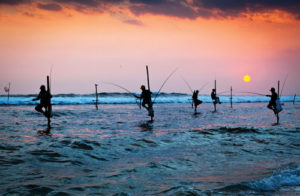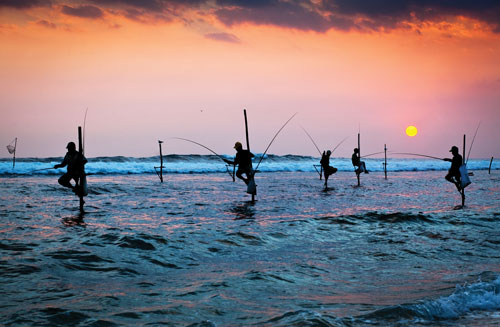Free from the shackles of civil war, Sri Lanka’s tourism is ready to welcome a new dawn. But new tensions are surfacing amid rapid development with issues of sustainability at the heart

Sri Lanka is celebrating 50 years of organised tourism and the cherished goal of two million arrivals this year, but it seems the industry has not been able to reap the full benefits of peace since the decades-long bloody civil war ended in May 2009.
Some believe the growth in arrivals to the country – 1.8 million in 2015, a sharp rise from 450,000 in 2008 – is unrepresentative of sustained interest in Sri Lanka as a tourist destination.
Srilal Miththapala, director at Laughs Leisure and former president of the Tourist Hotels Association of Sri Lanka, opined: “Though year-on-year arrivals grew after the end of the conflict, it is mostly due to the curiosity factor and pent-up demand.
“There has been no proper focused country promotions except for participation at roadshows and trade fairs,” Miththapala noted, echoing a sentiment among many industry players of the need for a targeted marketing plan.
In defence, state-owned Sri Lanka Promotions Bureau chairman Paddy Withana said promotions are ongoing but efforts are mainly channelled towards digital marketing at the moment.
On the other hand, Shafraz Fazley, managing director of Viluxor Holidays, witnessed the surge in Chinese arrivals despite the lack of promotions in China.
Fazley reckoned the few country promotions undertaken some years ago have created lingering awareness even in the absence of more recent promotions.
“In fact if there are country promotions, we may not be able to meet the demand,” he said.
The growth in Chinese arrivals is dramatic. From just 10,410 arrivals in 2010 and without even ranking in Sri Lanka’s top 10 source markets, China swept aside the competition to reach 214,783 arrivals in 2015, a 67.6 per cent surge from 128,166 in the previous year.
This year China is expected to overtake India as Sri Lanka’s main source market, a reflection of the dramatic change in the visitor profile to the country which was once dominated by European travellers from the 1970s to 2000.
Since 2009, new hotels, guesthouses and homestays have sprung up in Colombo and its outskirts, with pricing varying from US$10 to US$1,500 per day.
Online bookings, mostly for two- to three-star and lower-tier accommodation, have surged to an estimated 30-40 per cent of all bookings against established contracts through travel operators.
New upscale brands opening in 2016-2018 are Shangri-La (with two resorts), Sheraton, Hyatt, ITC, Movenpick, adding to existing properties such as Hilton, Taj and Ramada. Home-grown brands such as Heritance, Cinnamon and Jetwing are also expanding rapidly.
Further adding to the landscape are new restaurants offering international cuisines and a few shopping malls.
However, some industry stakeholders are questioning if a fixation on burgeoning touristic establishments may eclipse the more enduring attractions of the island such as untouched nature, rich culture, vast swathes of green countryside and rustic villages.
Heritage, for instance, holds a rare charm unparallelled by the appeal of newer establishments, evident from the over 200-year-old Mount Lavinia Hotel, Queen’s Hotel (160 years), Galle Face Hotel (152 years) and The Grand Hotel (124 years), former mansions of governors during British colonial rule.
“Sustaining and maintaining the industry is the challenge,” said Hiran Cooray, chairman of Jetwing Group.
“What is distinctive in our market? We have to score on the warmth, friendliness and cheerfulness of our people. That comes naturally (to an island nation like Sri Lanka). Even during troubled times, tourists came because of the people,” he added.
Another challenge, he said, is to keep Sri Lanka as green as possible. “We are blessed that close to 50 per cent of our country is still green – plantations and forests. This should be in the DNA of tourism.”
Suppose these remain part of the landscape, travellers will continue to visit Sri Lanka, enchanted by the same quality of beauty, gemstones and spices that enticed 13th-century explorer Marco Polo – with or without promotions.
This article was first published in TTG Asia, May 6, 2016 issue, on page 25. To read more, please view our digital edition or click here to subscribe.




















